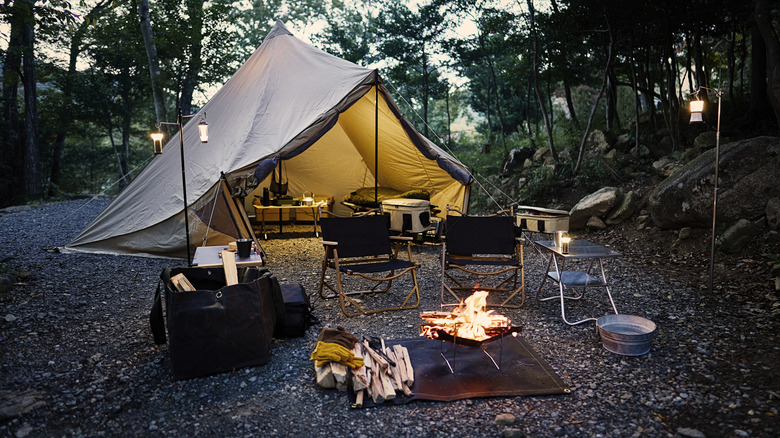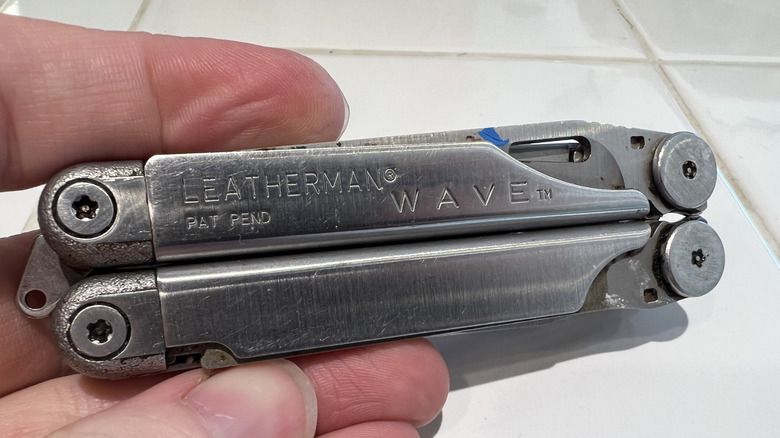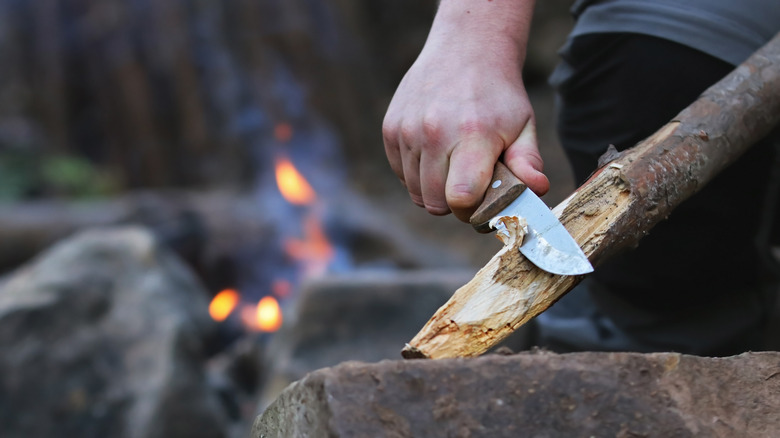This Common Type Of Camping Tool Is Far Less Useful Than Most People Realize
We may receive a commission on purchases made from links.
One of the biggest considerations before heading outdoors overnight is gear, as discussed in this ultimate guide to packing. What kind of tent do you need? Do you have a warm sleeping bag? Is your camping stove easy to use? Does it have enough fuel? Do you have a reliable headlamp and some kind of lantern for when it gets dark? Having the right gear makes camping go much more smoothly — along with these simple tips — and this especially goes for tools. You might bring a hatchet or saw for dealing with firewood, or even a shovel to dig trenches and pits.
However, when you're backpacking you don't have the luxury of carrying so much weight, smaller implements become more important, and one that has long been in every camper's arsenal is the multi-tool. A multi-tool contains a number of implements that conveniently fold out when they're needed. Models such as the Leatherman and the legendary Swiss Army Knife spring to mind — with its array of blades, tweezers, can and bottle opener, screwdriver, file, corkscrew, scissors, plastic toothpick, and more.
The idea is that multi-tools will provide you with any tool you need when the moment arises and are the ultimate way to head out into the woods prepared. It turns out, however, that they may be more trouble than they're worth, that in the vast majority of situations outdoors, a sharp, sturdy, simple knife is really all you need.
A nifty tool that you may not actually need outdoors
When comparing multi-tools and camping knives, the first consideration is size and weight. It goes without a saying that a multitool is both heavier and bulkier, weighing up to 12 ounces, while a pocket knife is only going to come in at 3 to 4 ounces. Multi-tools are also not often easy to use. They can be hard to get a good grip on, while a simple knife is designed to fit perfectly in your hand. When it comes to durability, a multi-tool also doesn't last as long as a good knife, so you're losing a few points on lifespan as well.
There's also the idea of quality. "Away from a Phillips-head screwdriver and can opener, the tool you're going to find yourself using most often outdoors is a knife blade," writes outdoor lifestyle columnist Wes Stiles in Outside. "And while yes, multi-tools and Swiss Army Knives do tend to include one of those, they're usually small and of poor quality." He also outlines two further reasons multi-tools fall short: "1) the handle will be uncomfortable and 2) it'll be subject to failure."
How to choose a good camping knife
Multi-tools may not have the best blades, but this doesn't mean you need to get rid of them altogether. Stiles himself admits that he carries both a small multi-tool as well as a separate camping knife. The question is: What kind of knife is your best choice?
First of all, it needs to be able to perform basic camping tasks such as slicing through cord, whittling sticks, cutting small pieces of firewood, and even gutting fish. Foldable pocket knives are your best bet for size and portability, but sturdier fixed blade knives — while heavier — are much less likely to fail, more comfortable to grip, and easier to use.
When it comes to fixed blade knives, Stiles suggests the Esee-3HM. This 8.3" knife boasts 3.38" of cutting edge and is made from carbon steel, which is much stronger than the stainless steel found in most knives, but more prone to corrosion, so you've got to keep it clean. The handle is made from linen micarta, an extremely-endurable laminate that offers a comfortable grip whether bare-handed or wearing gloves. For a durable folding knife that may last you a lifetime, check out the Benchmade Bugout, an super-lightweight pocket knife that's also as strong as it gets. Gear is an essential part of any camping trip, and here is a list of things you should buy at IKEA.


